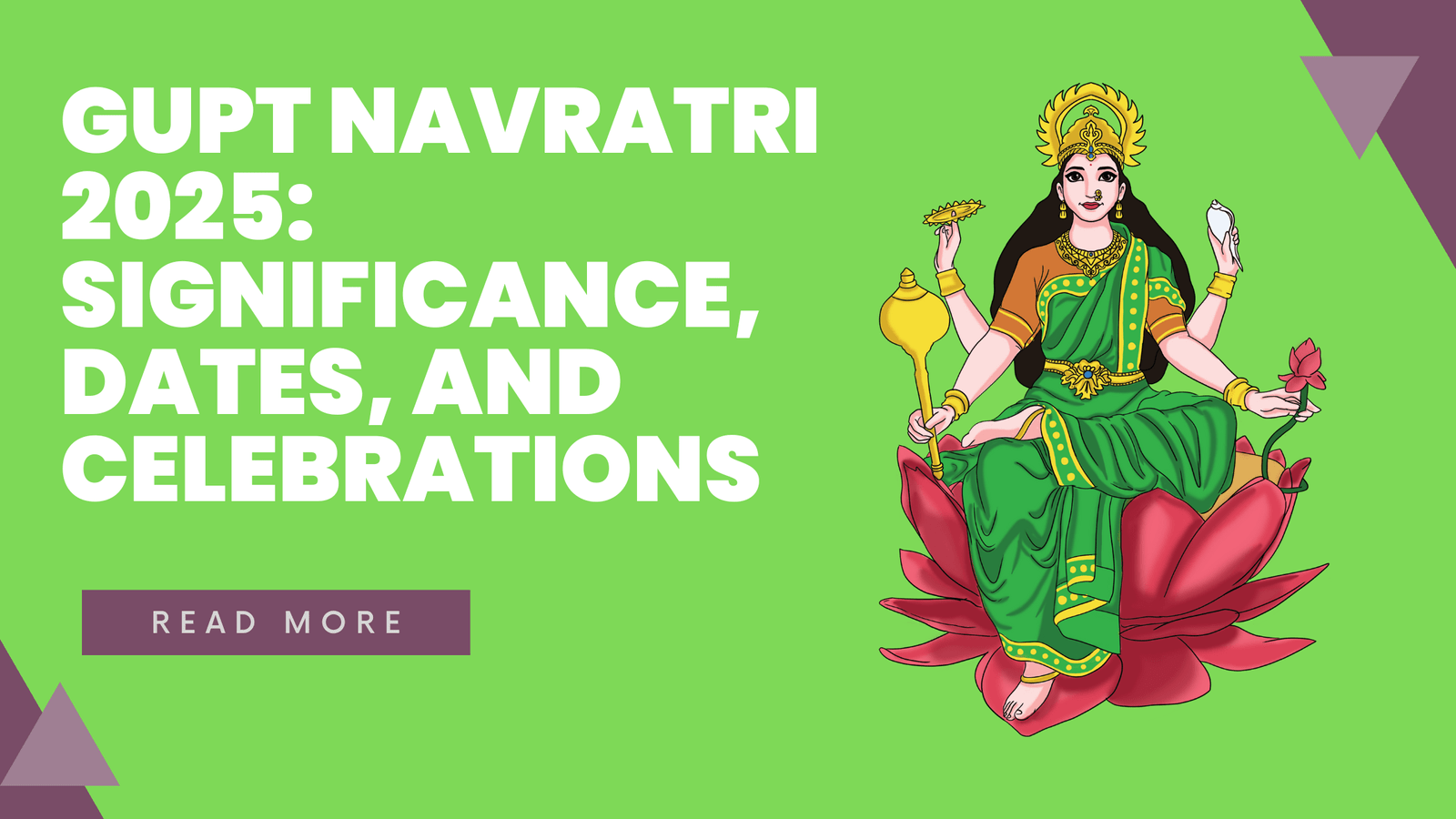Gupt Navratri 2025: Significance, Dates, and Celebrations
Navratri is one of the most sacred and widely celebrated festivals in India, dedicated to the worship of Goddess Durga. While the main Navratri, which is celebrated during the months of September or October, is known to most, there is also another Navratri that takes place in the months of Chaitra and Ashvin — this is known as Gupt Navratri.
Gupt Navratri, though not as widely observed as the main Navratri, is just as important in terms of spiritual significance and devotion. In this blog, we’ll explore the meaning of Gupt Navratri, its dates in 2025, and how this lesser-known festival is observed by spiritual seekers.
What is Gupt Navratri?
Gupt Navratri is considered a “hidden” or “secret” Navratri. The word “Gupt” in Sanskrit means hidden, and this Navratri is primarily observed in a more personal and secretive way. While the larger Navratri celebrations are filled with public rituals, processions, and dance (like Garba in Gujarat), Gupt Navratri is more focused on personal spiritual practices, self-reflection, meditation, and intense worship.
This festival is observed in the months of Chaitra (March-April) and Ashvin (September-October) on the pratipada (first day) of the bright half of the lunar month. Gupt Navratri usually falls six months after the main Navratri.
Gupt Navratri Dates in 2025
In 2025, Gupt Navratri will begin on March 25, 2025, and conclude on April 2, 2025. During this time, devotees worship Goddess Durga in her various forms, including Durga, Lakshmi, and Saraswati, while focusing on inner peace and spiritual growth.
Significance of Gupt Navratri
The significance of Gupt Navratri lies in its focus on personal spiritual transformation rather than public celebrations. Here are a few key points about its significance:
- Spiritual Awakening: During Gupt Navratri, devotees engage in fasting, meditation, and prayer to awaken their spiritual potential and connect deeply with the divine energy of Goddess Durga. It’s a time to clear the mind and focus on one’s own growth.
- Hidden Worship: As the name suggests, this Navratri is less about public worship and more about private devotion. People often worship the Goddess in the solitude of their homes, with specific rituals and prayers that are known only to the devotee. It’s a time for secretive, inner transformation.
- Penance and Purification: Many people observe fasts or follow strict vows during Gupt Navratri as a form of penance and purification. This helps cleanse the mind, body, and soul, preparing them for greater levels of spiritual connection and enlightenment.
- Blessings of the Goddess: Just like the main Navratri, Gupt Navratri is believed to bring the blessings of Goddess Durga, Lakshmi, and Saraswati. Devotees seek blessings for prosperity, knowledge, strength, and wisdom during this period.
How is Gupt Navratri Celebrated?
Unlike the grand celebrations of the main Navratri, Gupt Navratri is observed in a more personal and solemn manner. Here’s how people generally celebrate:
- Fasting and Worship: Many devotees observe a strict fast during the nine days of Gupt Navratri. Some may choose to consume only fruits, milk, and other sattvic (pure) food, while others may completely abstain from food, focusing only on water and fruits. During this time, they offer prayers to Goddess Durga in the form of different manifestations such as Durga, Lakshmi, and Saraswati.
- Reciting Mantras and Chants: A key part of the celebration is chanting the Durga Saptashati or other mantras dedicated to Goddess Durga. These chants are believed to bring peace, strength, and blessings.
- Meditation and Yoga: Spiritual seekers often use this time to meditate and practice yoga to connect with the divine energy. The emphasis is on calming the mind and purifying the soul.
- Hawan or Yajnas: Some families or devotees conduct small homas (fire rituals) or yajnas during Gupt Navratri to seek the divine blessings of Goddess Durga. These rituals are performed in the privacy of one’s home or in small spiritual gatherings.
- Sadhana (Spiritual Practices): Gupt Navratri is a time for intense sadhana (spiritual practice). People engage in spiritual disciplines that help them progress on the path of devotion, knowledge, and self-realization.
- Prayers for Knowledge and Prosperity: While the larger Navratri is associated with seeking general blessings, Gupt Navratri is often seen as an opportunity for devotees to specifically seek blessings for wisdom, success, and inner peace.
Conclusion
Gupt Navratri, though not as widely celebrated as its counterpart, holds great significance for spiritual seekers. It is a time for deep personal transformation, focused prayer, fasting, and inner growth. In 2025, Gupt Navratri will begin on March 25th and conclude on April 2nd, offering an excellent opportunity to deepen one’s spiritual practices and connect with the divine in a more private, sacred way.
For those who choose to observe it, this festival is an opportunity for purification, penance, and devotion, making it a truly sacred period of the year. Whether you are an experienced spiritual practitioner or someone looking to explore deeper aspects of your faith, Gupt Navratri offers a special time to enhance your spiritual journey.






